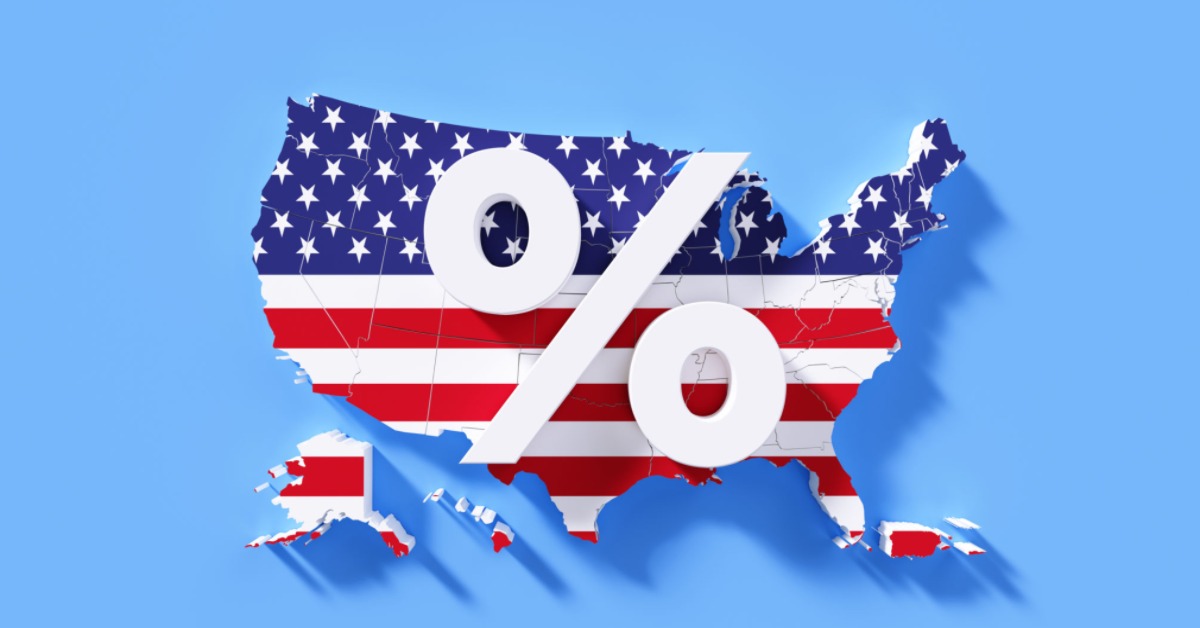The states offering the lowest 30-year new purchase mortgage rates are New York, Washington, New Jersey, North Carolina, California, Michigan, Virginia, Arizona, and Oregon, with averages ranging from 6.66% to 6.83%. Keep reading to learn more about what's impacting these rates, and how to find the best deal for you.
Today’s Mortgage Rates: The States Offering Lowest Rates
Why Mortgage Rates Matter (More Than You Think)
Let's be real, mortgage rates aren't the most exciting topic. But, they dramatically impact how much you'll pay for your home over the years. A small change in the rate can lead to thousands of dollars in savings or extra costs. Understanding these rates is crucial whether you're a first-time homebuyer or looking to refinance.
State-by-State Breakdown of Mortgage Rates
Mortgage rates aren't the same across the country. Several factors contribute to these differences, including the lenders that operate in a particular state, state-level regulations, and average loan sizes and credit scores in these states.
According to Investopedia's report and Zillow's data, here's a quick view of the states with the highest and lowest rates as of Wednesday:
- States with the Lowest 30-Year New Purchase Mortgage Rates:
- New York: 6.66%
- Washington: 6.70%
- New Jersey: 6.73%
- North Carolina: 6.76%
- California: 6.79%
- Michigan: 6.80%
- Virginia: 6.81%
- Arizona: 6.82%
- Oregon: 6.83%
- States with the Highest 30-Year New Purchase Mortgage Rates:
- West Virginia: 6.91%
- Alaska: 6.93%
- Washington, D.C.: 6.95%
- Kansas: 6.96%
- New Mexico: 6.98%
- Maryland/Missouri:6.98%
As you can see, there's a difference of over 0.3% between the lowest and highest rates. In the grand scheme of things, that is quite significant.
National Mortgage Rate Trends
While state-level rates are interesting, it's also good to keep an eye on national trends:
- 30-Year Fixed: 6.86% (up 2 basis points from yesterday)*
- FHA 30-Year Fixed: 7.55%
- 15-Year Fixed: 5.87%
- Jumbo 30-Year Fixed: 6.77%
- 5/6 ARM: 7.37%
It's important to remember that these are average rates. Your actual rate will vary based on your individual circumstances.
Why Do Mortgage Rates Vary from State to State?
I've always found the variation in mortgage rates across states to be fascinating. It comes down to a few key factors:
- Lender Presence: Not all lenders operate in every state. That means less competition in some states, which can lead to higher rates.
- State Regulations: Mortgage regulations vary by state. Some states have stricter rules that can make it more expensive for lenders to operate.
- Credit Scores and Loan Sizes: States with generally higher average credit scores might see slightly lower rates, as lenders perceive less risk. Similarly, areas with larger average loan sizes may reflect in the rates.
- Risk Tolerance: Some lenders are simply more willing to take on risk than others, which affects the rates they offer.
The Importance of Shopping Around
Here’s my golden rule for getting a mortgage: always shop around. Don't just go with the first lender you find. Rates can vary widely, so comparing offers is essential.
I know it can be time-consuming, but it's worth the effort. Even a small difference in the interest rate can save you a lot of money over the life of the loan. You might be surprised at how much rates differ from one lender to the next.
I know from my own experience, that shopping for the best rate when buying my first home resulted in over $10,000 in savings over the life of the loan. Don't let that money slip through your fingers.
Factors Influencing Mortgage Rates
Understanding these factors can help you anticipate whether rates are likely to rise or fall:
- The Bond Market: Mortgage rates often track the yield on 10-year Treasury bonds. If bond yields rise, mortgage rates tend to follow suit.
- The Federal Reserve: The Fed's monetary policy plays a significant role. Its policies on bond buying and funding government-backed mortgages can influence rates.
- Competition Among Lenders: The more lenders compete for your business, the better the rates you're likely to get.
The Federal Reserve’s Current Role
The Federal Reserve plays a huge role in setting the tone for mortgage rates. Here’s what’s been happening:
- Recent Rate Cuts: The Fed cut rates three times from September to December 2024, bringing the federal funds rate down to a target range of 4.25%–4.5%.
- Future Outlook: The Fed is expected to make two further rate cuts in 2025. When? That's the million-dollar question.
- Key Influences: Factors like tariffs, inflation, economic slowdown, and even political pressure influence the Fed's decisions.
As mentioned above, because the Fed is projecting cuts to the rates later this year, analysts are projecting the 30-year mortgage rate to progressively reduce. There are hopes of a 5% rate being available by the year 2028.
Read More:
States With the Lowest Mortgage Rates on July 23, 2025
Are Mortgage Rates Expected to Go Down Soon: A Realistic Outlook
How to Calculate Your Potential Mortgage Payment
Before you start looking at homes, get an idea of what you can afford. Online mortgage calculators can help you estimate your monthly payments based on factors like:
- Home price
- Down payment
- Loan term
- Property taxes
- Homeowners insurance
- Interest rate
Keep in mind, these are just estimates. Your actual payment could be different.
| Factor | Example |
|---|---|
| Home Price | $440,000 |
| Down Payment | $88,000 (20%) |
| Loan Term | 30 years |
| Interest Rate (APR) | 6.67% |
| Estimated Monthly Payment | $2,649.04 |
My Advice: Prepare and Be Patient
Getting a mortgage can be a complex process, but with some preparation, you can go in ready. Here are a few tips I've learned along the way:
- Check Your Credit Score: A good credit score will help you get a better rate.
- Save for a Down Payment: The more you put down, the less you'll have to borrow.
- Get Pre-Approved: This will give you a better idea of how much you can afford and make you a more attractive buyer.
- Shop Around: I can't stress this enough. Get quotes from multiple lenders. There are no obligations to committing just from hearing offers.
Final Thoughts
Today's mortgage rates are constantly changing. While some states offer slightly lower rates than others, the most important thing is to shop around, compare offers, and find the best deal for your specific financial situation. Keep an eye on national trends, and don’t be afraid to ask questions. After-all, this is likely the biggest purchase you have or will make in your life.
Invest in Real Estate in the Top U.S. Markets
Investing in turnkey real estate can help you secure consistent returns with fluctuating mortgage rates.
Expand your portfolio confidently, even in a shifting interest rate environment.
Speak with our expert investment counselors (No Obligation):
(800) 611-3060
Also Read:
- Will Mortgage Rates Go Down in 2025: Morgan Stanley's Forecast
- Expect High Mortgage Rates Until 2026: Fannie Mae's 2-Year Forecast
- Mortgage Rate Predictions 2025 from 4 Leading Housing Experts
- Mortgage Rates Forecast for the Next 3 Years: 2025 to 2027
- 30-Year Mortgage Rate Forecast for the Next 5 Years
- 15-Year Mortgage Rate Forecast for the Next 5 Years
- Why Are Mortgage Rates Going Up in 2025: Will Rates Drop?
- Why Are Mortgage Rates So High and Predictions for 2025
- Will Mortgage Rates Ever Be 3% Again in the Future?
- Mortgage Rates Predictions for Next 2 Years
- Mortgage Rate Predictions for Next 5 Years
- Mortgage Rate Predictions: Why 2% and 3% Rates are Out of Reach
- How Lower Mortgage Rates Can Save You Thousands?
- How to Get a Low Mortgage Interest Rate?
- Will Mortgage Rates Ever Be 4% Again?



